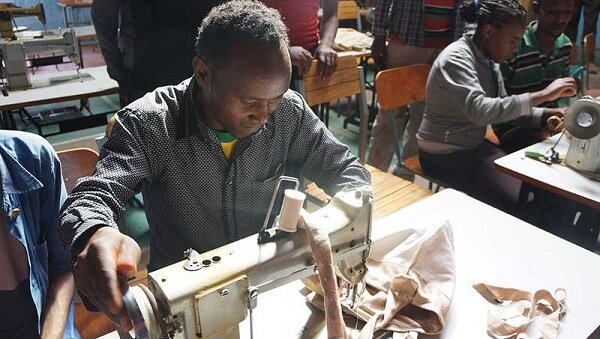6,500 youth in marginalised areas to benefit from peace programme
By Claire Wanja/Release
The European Union has launched a 1.3 billion shillings program to help in preventing conflicts, promoting peace and creating economic opportunities for the youth in nine vulnerable counties in Kenya.
The program which was launched in Lamu County seeks to equip 6,500 youth in marginalised areas with vocational skills to better enable them to enter the job market and 4000 youth to manage conflict.
The program contributes to increased peace and stability by supporting inclusive economic opportunities for youth in North East and coastal Kenya.
Funded by the European Union (EU) under the Emergency Trust Fund, for “stability and addressing the root causes of irregular migration and displaced persons in Africa,” The project will target young people in nine [U1] counties across Kenya, among them, Lamu, Mombasa, Taita Taveta, Tana River, Kwale, Kilifi, Garissa, Wajir and Mandera. These are counties that face high unemployment rates among the youth in Kenya.
Through vocational skills training the 6,500 youth will be better able to access economic opportunities. It will be carried along demand driven vocational training areas, awareness and orientation in career guidance and counselling to increase employability of the youth.
The project will also provide training on entrepreneurships, start-ups or access to micro-financing with a view to establishing businesses, establishing youth co-operative societies for farming communities and establishing relations with the private sector.”
The Governor of the County Governor of Lamu, Issa Timamy welcomed the programme saying alleviating poverty will have positive ripple effects.
“The programme will address some of the underlying factors that have the potential to motivate youth to resort to violence including grievances such as the feeling of exclusion, lack of opportunities and inequality. They will be able to focus more on income generating opportunities which thrive in a peaceful environment.”
The European Union Head of Macroeconomics and Governance, Vincent de Boer highlighted that providing perspective for youth at the fringes of society will contribute to harness the energy and talent of Kenya’s youth to build stability and opportunities.
“If young people are given inclusive access to better vocational educational opportunities, this will lead to decent jobs and livelihoods for target groups, grievances will decline and better economic opportunities will be created. This will contribute to reduced vulnerability, enhanced economic stability and positive peace,” Vincent added.
4000 youth in vulnerable communities will learn conflict management skills that better enable them to address and deal with frustration and grievances.
Youth will be assisted in exploring options that enhance civic engagement with their government and create networks that address issues in non-violent ways. “Focus will be placed on options available to the youth in engagement with key stakeholders and continuous support will be provided in the form of guidance and livelihoods support,” said de Boer.
The EU has committed €12 million, an equivalent of Sh1.3 Billion towards the programme.
Part of the four-year project outcome is to address the unemployment and inadequate inclusion of the young people. The project will focus on providing livelihood skills and vocational training for youth in the nine target counties. A market assessment to map out business and employment opportunities available for the youth, identify skills gaps in the various market spaces and determine the economic viability of livelihood opportunities, will be conducted.
The project will facilitate youth dialogues in a bid to engage them in discussing issues affecting them and propose solutions. There is no ultimate solution to the issues affecting the youth as both the needs and context are complex.
Unemployment is a global concern. According to a report released by the World Bank in March 2016, Kenya’s growing work force is not being put into productive use, which in turn is hurting growth. The report further states that the share of the working age population rose from 47 per cent in 1990 to 56 per cent in 2014, and expected to reach 62 per cent by 2050.
In Kenya, youth unemployment is estimated at 35 per cent compared to the overall national rate that stands at 10 per cent. Of the unemployed Kenyans, 80 per cent constitute individuals below the age of 35.





